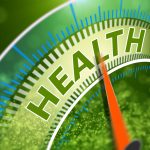
Education
Chronic Kidney Disease: You May Be At Risk and Not Know It
3 min. read
An estimated 37 million U.S. adults have chronic kidney disease, or CKD, and millions more are at increased risk, according to the National Kidney Foundation. Early detection can help prevent the progression of kidney disease to kidney failure.
March is National Kidney Month, and Thursday, March 14th, is recognized as World Kidney Day. Both observances involve campaigns to educate the public on the importance of reducing the frequency and impact of kidney disease.
About 40 percent of people with severely reduced kidney function (not on dialysis) are not aware of having CKD, states the U.S. Centers for Disease Control and Prevention (CDC).
Unhealthy lifestyle choices, which include high consumption of processed and sugary foods, low physical activity levels and chronic sleep deprivation, are fueling an increased prevalence of high blood pressure, metabolic syndrome and diabetes. And these risk factors can contribute to chronic kidney disease.
The two main causes of CKD are diabetes and high blood pressure, which are responsible for up to two-thirds of U.S. cases. About 1 of 3 adults with diabetes and 1 of 5 adults with high blood pressure may have CKD, according to the CDC.
“It is vital that you control these two conditions and their effect on your kidneys by seeing your doctor regularly, monitoring your blood pressure, eating a healthy diet, reducing salt intake and taking any medications as prescribed,” says Gabriel Solti Grasz, M.D., an internal medicine physician with Baptist Health Primary Care.
The kidneys function as the body’s filtration system. But when they don’t work properly, the body may struggle to eliminate fluid and waste. In extreme cases, chronic kidney disease, or CKD, can lead to the need for dialysis or a kidney transplant over time.
If you are at increased risk for chronic kidney disease, your primary care doctor will likely monitor your blood pressure and conduct two simple tests to detect early signs of abnormal kidney function. One of them is a urine test to that detects persistent protein in your urine. When your kidneys are damaged, they do not properly filter protein, causing it to leak into your urine. The other is a blood test to check for creatinine, a waste product that comes from muscle activity. The results are used to estimate your glomerular filtration rate (GFR) – a measure of your kidney function.
Another important sign that doctors look for is hematuria, the presence of blood cells in the urine.
“Often people don’t have symptoms,” said Juan Kusnir, M.D., a nephrologist with Baptist Health South Florida. “They don’t have anything that raises a red flag at them and they say, ‘Oh I need to go see a kidney doctor.’ ”
However, adds Dr. Kusnir, there are symptoms that people should know. “They may get swelling (especially in the feet and ankles). They may have a sudden elevation in their blood pressure. They may have blood in their urine. Or they may notice that their urine is changing. The urine may become very foamy, very bubbly.”
Preventive medicine is the key, says Dr. Kusnir, whose patients who referred to him mostly from a primary care physician after initial blood and urine testing and other examinations.
These tests are not very invasive, explains Dr. Solti Grasz. It’s as simple as urinating in a cup, and then we can tell if there is blood in the urine or if there is protein in the urine, he adds. “These tests are easy and simple.”
Here are steps to keep your kidneys healthier longer, according to the National Institute of Diabetes and Digestive and Kidney Diseases, part of the National Institutes of Health:
- Choose foods with less salt (sodium)
- Control your blood pressure
- Keep your blood sugar in the target range, if you have diabetes
- Limit the amount of alcohol you drink
- Choose foods that are healthy for your heart: fruits, vegetables, whole grains, and low-fat dairy foods
- Lose weight if you are overweight
- Be physically active
- Don’t smoke
Signs and symptoms of chronic kidney disease develop over time. They can include:
- Nausea
- Vomiting
- Loss of appetite
- Fatigue and weakness
- Sleep problems
- Changes in how much you urinate
- Decreased mental sharpness
- Muscle twitches and cramps
- Swelling of feet and ankles
- Persistent itching
- Chest pain, if fluid builds up around the lining of the heart
- Shortness of breath, if fluid builds up in the lungs
- High blood pressure (hypertension) that’s difficult to control
Healthcare that Cares
Related Stories
View All Articles
More Teens Getting HPV Vaccinations, But Too Many Are Not, CDC Reports
January 17, 2024
2 min. read

Healthy Resolution: Figuring Your Ideal Weight and Why That's Important
December 27, 2023
4 min. read

Overindulging Over the Holidays? Tips for Defeating Acid Reflux, Heartburn Naturally
December 20, 2023
2 min. read